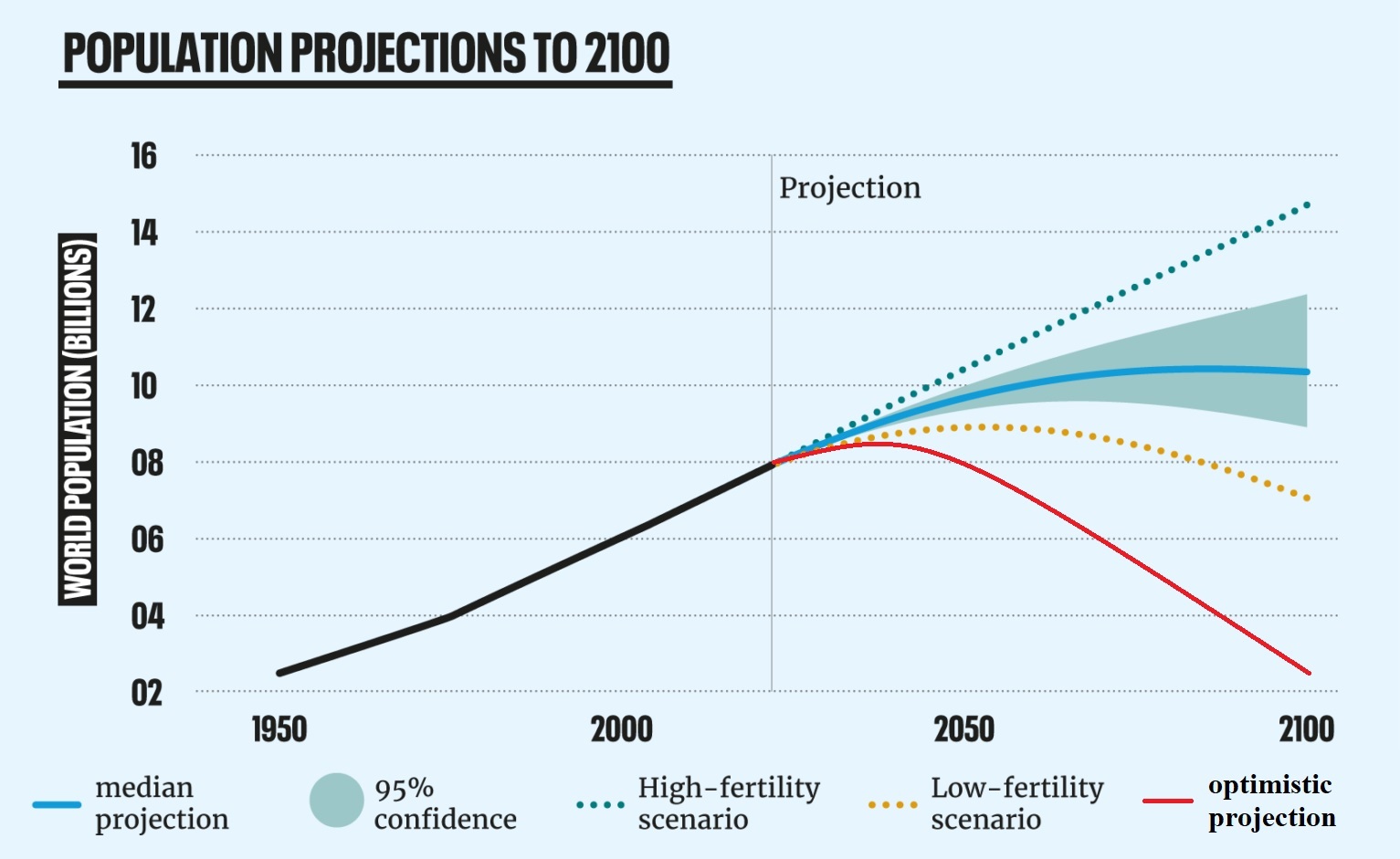A population decline (also sometimes called underpopulation, depopulation, or population collapse) in humans is a reduction in a human population size. Over the long term, stretching from prehistory to the present, Earth’s total human population has continued to grow; however, current projections suggest that this long-term trend of steady population growth may be coming to an end.

Population reduction
Wikipedia
https://en.wikipedia.org/wiki/Population_reduction
The term population reduction may refer to:
Population decline
Wikipedia
https://en.wikipedia.org/wiki/Population_decline
A population decline (also sometimes called underpopulation, depopulation, or population collapse) in humans is a reduction in a human population size. Over the long term, stretching from prehistory to the present, Earth’s total human population has continued to grow; however, current projections suggest that this long-term trend of steady population growth may be coming to an end.
Until the beginning of the Industrial Revolution, global population grew very slowly. After about 1800, the growth rate accelerated to a peak of 2.09% annually during the 1967–1969 period, but since then, due to the worldwide collapse of the total fertility rate, it has declined to 1.05% as of 2020. The global growth rate in absolute numbers accelerated to a peak of 92.9 million in 1988, but has declined to 81.3 million in 2020. Long-term projections indicate that the growth rate of the human population of this planet will continue to decline and that by the end of the 21st century, it will reach zero. Examples of this emerging trend are Japan, whose population is currently (2015–2020) declining at the rate of 0.2% per year, and China, whose population could start declining in 2027 or sooner. By 2050, Europe’s population is projected to be declining at the rate of 0.3% per year.
Population growth has declined mainly due to the abrupt decline in the global total fertility rate, from 5.0 in 1960 to 2.3 in 2020. The decline in the total fertility rate has occurred in every region of the world and is a result of a process known as demographic transition. In order to maintain its population, ignoring migration, a country requires a minimum fertility rate of 2.1 children per woman (the number is slightly greater than 2 because not all children live to adulthood). However, almost all societies experience a drastic drop in fertility to well below 2 as they grow more wealthy (see income and fertility). The tendency of women in wealthier countries to have fewer children is attributed to a variety of reasons, such as lower infant mortality and a reduced need for children as a source of family labor or retirement welfare, both of which reduce the incentive to have many children. Better access to education for young women, which broadens their job prospects, is also often cited.
Possible consequences of long-term national population decline can be net positive or negative. If a country can increase its workforce productivity faster than its population is declining, the results, in terms of its economy, the quality of life of its citizens, and the environment, can be net positive. If it cannot increase workforce productivity faster than its population’s decline, the results can be negative.
National efforts to confront a declining population to date have been focused on the possible negative economic consequences and have been centered on increasing the size and productivity of the workforce.